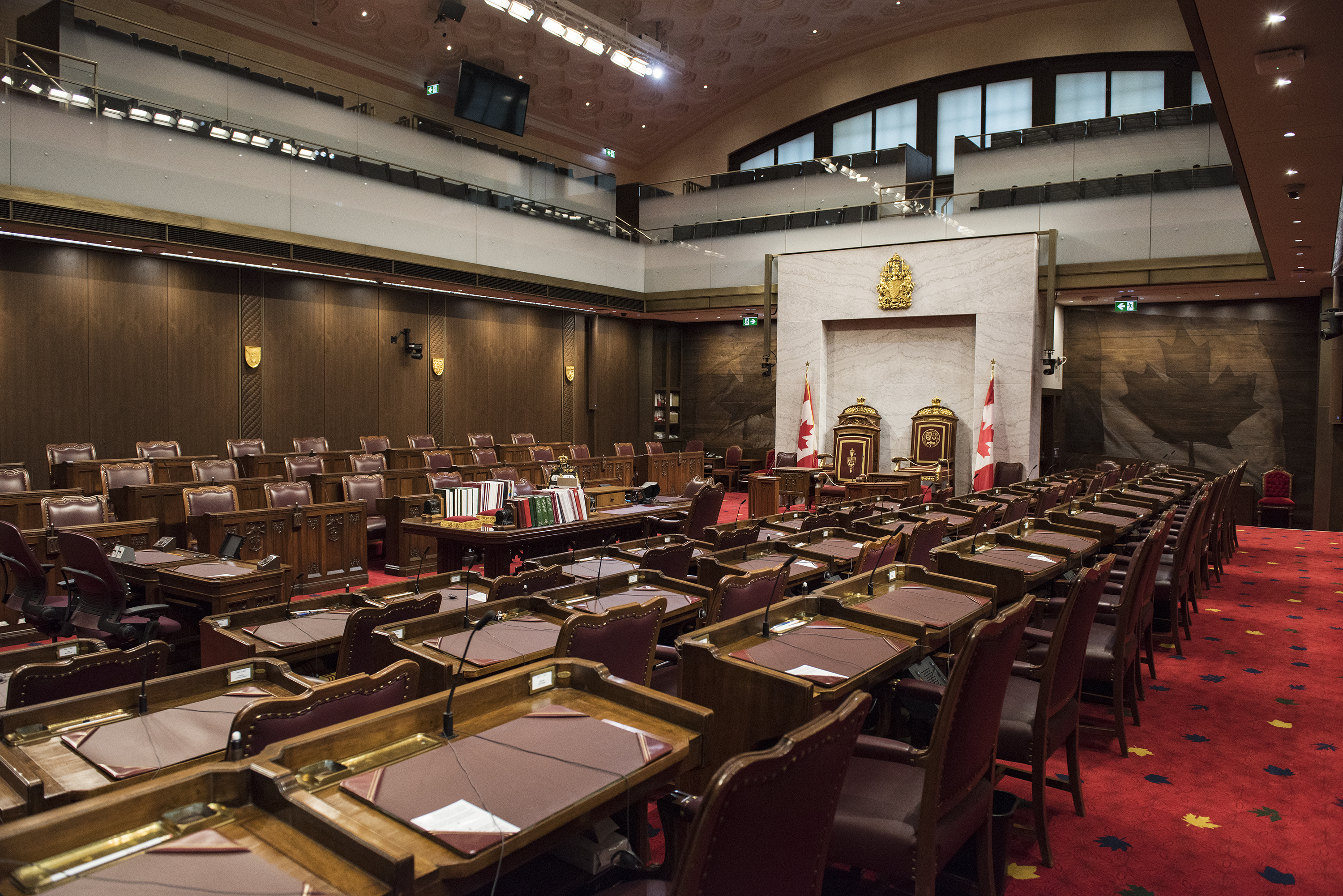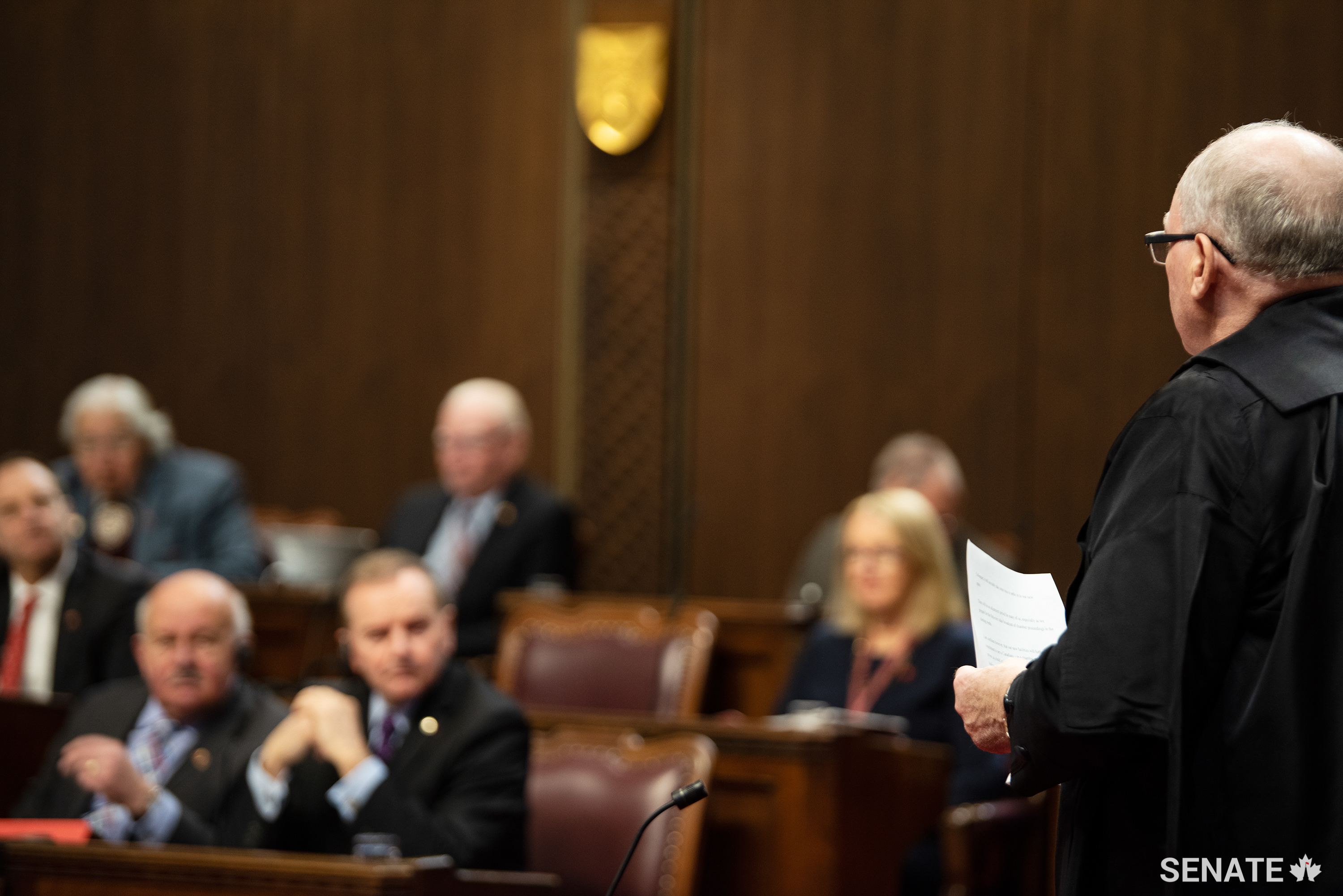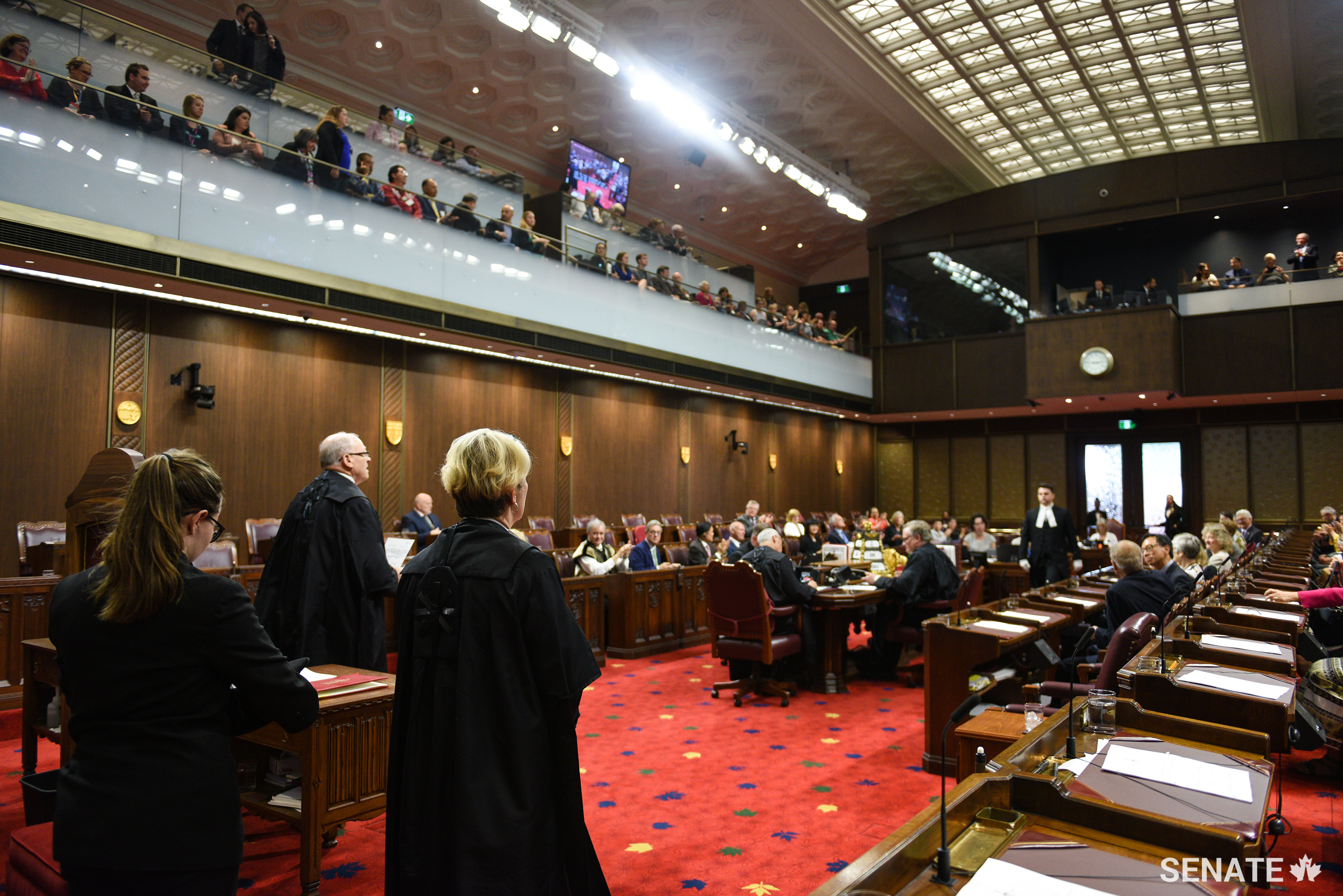Senate Sitting Order: An Explanation

Each Senate sitting combines proceedings, rituals and current affairs that are equal part business and ceremony. The following is a short explanation of the various parts of a typical Senate sitting.
SPEAKER’S PARADE
Every Senate sitting opens with the Speaker’s Parade. Dressed in traditional garb, the Speaker — who presides over proceedings, debates and voting — enters the Chamber as part of a parade, which includes the Usher of the Black Rod and the ceremonial Senate mace carried by the Mace Bearer. The Speaker then bows to the thrones, which represent the monarch’s presence in the Senate, before moving towards the Speaker’s Chair.

PRAYERS
A quorum of 15 senators, including the Speaker, is required for the Senate to sit and conduct business. As soon as quorum is seen, the Speaker recites short prayers asking for protection for the monarch and the people of Canada. This is a tradition that stretches back to the foundation of Confederation, though the prayers have been changed many times over the years.
SENATORS’ STATEMENTS
Following prayers, senators are given a chance to remark on matters of public interest. These statements can, for instance, recognize the achievements of a person in the senator’s region, raise awareness for an issue important to the senator, or acknowledge the contributions of a current or former colleague. Each statement can last a maximum of three minutes, and the total time for these statements is 15 minutes, unless senators are paying tribute to a departing senator or former senator, in which case there is an additional 15 minutes.
ROUTINE PROCEEDINGS
The Senate spends up to half an hour organizing its business for future sittings. The time is spent providing new information to senators by the tabling of documents, presenting reports from committees, giving first reading to bills, as well as giving notice of items for future sittings. Since the purpose of Routine Proceedings is to advise the Senate about items for future consideration or for information, debate is not allowed unless a request is made and no senator objects to it.
QUESTION PERIOD
Once Routine Proceedings is completed, the Senate begins an exercise in accountability — Question Period. For 30 minutes, you will see senators posing questions to the Government Representative in the Senate about public affairs, or committee chairs about studies and other activities. This is when you will hear spirited debate about the issues of the day, which gives the Senate a chance to keep the government — situated in the House of Commons — accountable for its decisions.

DELAYED ANSWERS
When a question asked by a senator during Question Period cannot be answered immediately, the senator answering the question can answer it in writing at a future sitting. A senator can also ask a question to the government by submitting a written question to the Clerk of the Senate, for inclusion in the Order Paper and Notice Paper. Once prepared, answers to these oral and written questions are tabled during Delayed Answers, which is called immediately after Question Period.
ORDERS OF THE DAY — GOVERNMENT BUSINESS
Once the Senate has completed Question Period, it dives into the bulk of work for the day, beginning with Government Business. This is when senators get to work on the nitty-gritty of government. They debate and vote on bills, analyze reports from committees on government business and debate motions and inquiries. The majority of government legislation originates in the House of Commons, but such items can start in the Senate as well.
ORDERS OF THE DAY — OTHER BUSINESS
After the Senate has finished with Government Business, it tackles the remaining Orders of the Day. These items, grouped under Other Business, include legislation proposed by individual senators (called Senate public bills) or by individual members of the House of Commons (private members’ bills). Committee reports, motions and inquiries that are non-government initiatives are also considered during this period.
There are no fixed time limits for the Orders of the Day, meaning Senate sittings can extend late in the day if there are many items on the Order Paper to be debated.
NOTICE PAPER
The final item on the Senate’s schedule is to consider non-government motions and inquiries for which notice was given, but debate hasn’t yet started. Once debate has started, these new motions and inquiries are placed on the Orders of the Day to be addressed at the next Senate sitting.
When an item of business is called, senators can either debate it, take a decision on it or postpone the debate until the next sitting of the Senate. This can be done by asking that the item “stand”. Items of non-government business can be stood for a maximum of 15 consecutive sitting days, after which they are dropped if they are called and not proceeded with.
ADJOURNMENT
When the Senate has completed its business for the day or reached the time of adjournment set out in the Rules of the Senate, a senator, typically the Legislative Deputy to the Government Representative, moves a motion to adjourn, to which the Senate typically agrees. Adjournment motions can also be moved at various points during the course of the sitting. When the Senate adopts a motion to adjourn, the Speaker rises and declares the Senate adjourned. The Speaker then bows to the senators and the thrones before exiting the Senate Chamber in a parade identical to the one that opened the Senate sitting.


